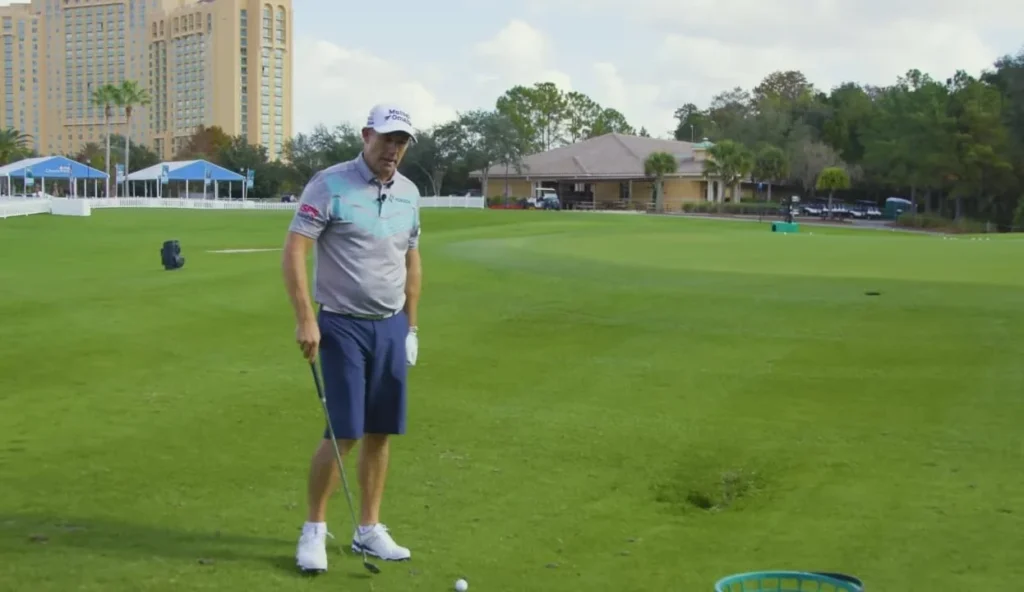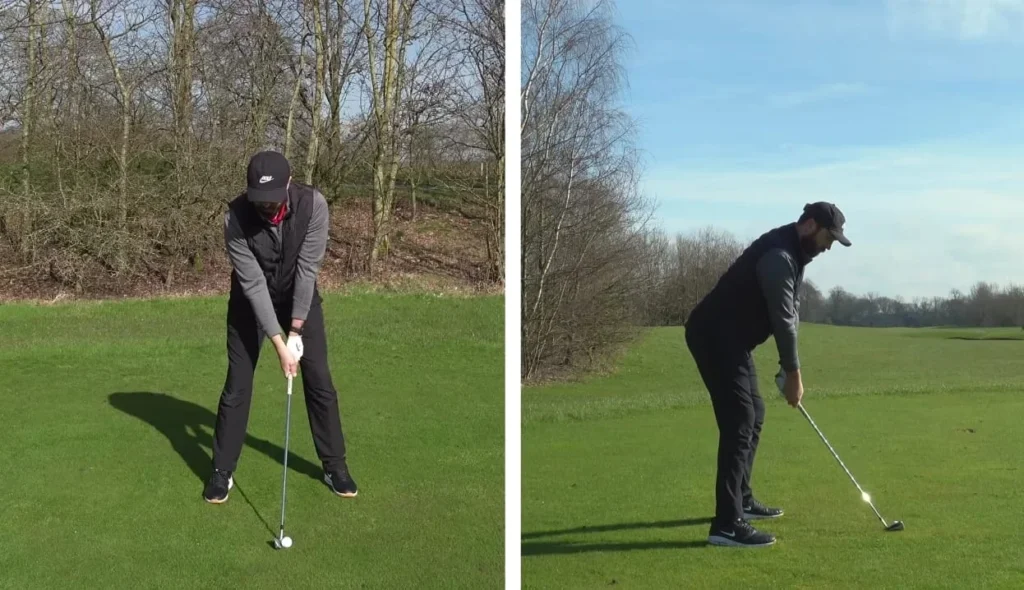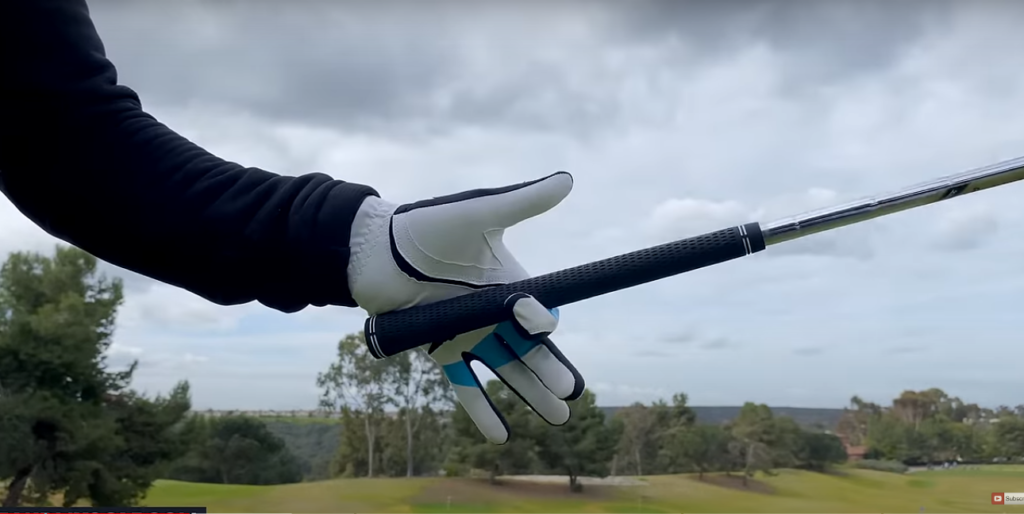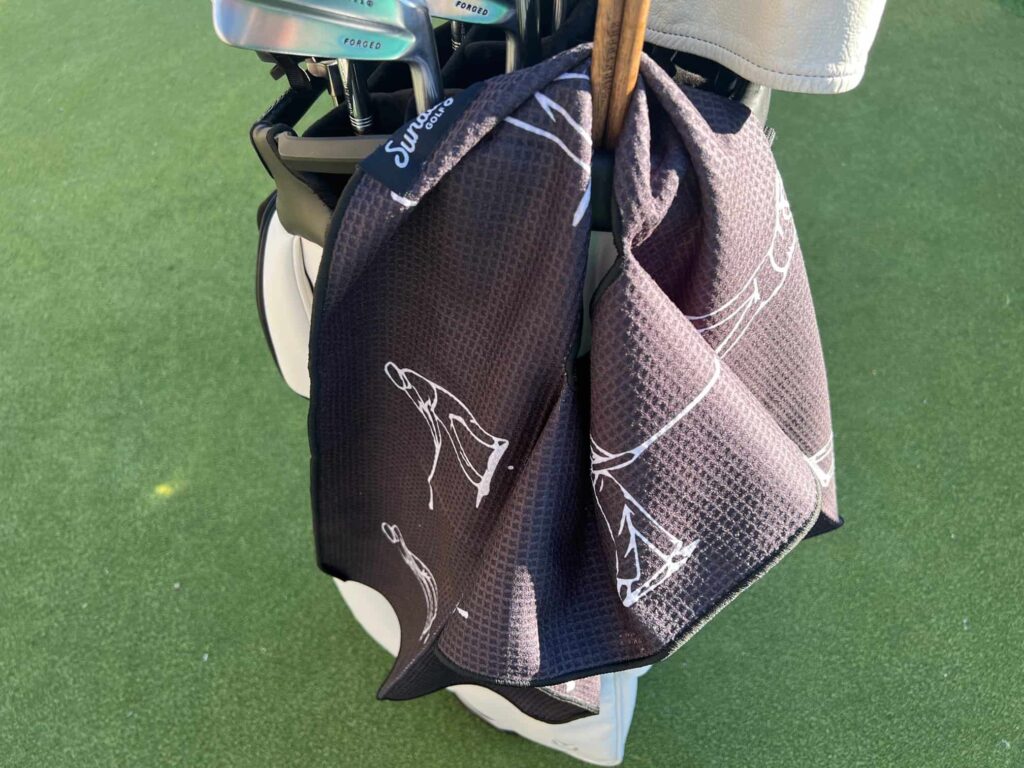You may be thinking, “Is this article about how to avoid low golf shots?” Well, no. We’re talking about hitting the driver too low intentionally. Low shots can be beneficial in some cases. If you are trying to achieve low shots intentionally, we’re here to help. Hopefully, this article will help you understand how low shots are beneficial and how to achieve them.
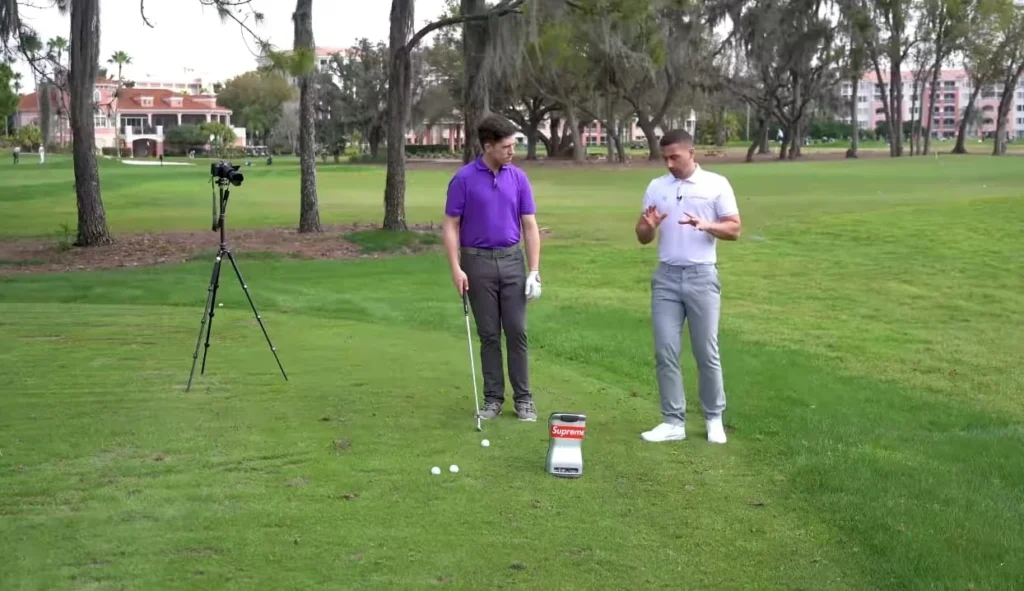
When to Choose Low Golf Shots?
Understanding when and how best to employ low shots is important when making strategic decisions on the course. Heavy winds, overhanging branches, or rolling out may require hiting the driver too low. We’ve described some cases in which low shots can be of immense help:
Playing in Windy Conditions
A low shot keeps the ball under the wind, maintaining trajectory control.
Hitting a Shot that Rolls Out
For firm fairways, a low shot with a longer club promotes increased roll after landing.
Navigating Under Obstacles
When tree branches pose a threat, a low shot helps the ball stay below obstacles.
Playing from a Tight Lie
Prevent excessive digging by executing a low shot from a tight lie, ensuring a solid connection.
Bump-and-Run Shots
A low shot with a low-lofted club, like a pitching wedge, facilitates controlled rolling on the green.
The Foundation: Stance and Club Selection
We’ve explained why hitting the driver too low can be helpful in some cases. Now, let’s find out how low golf shots happen i.e., how to intentionally hit the ball too low.
Stance Matters
An initial step to hitting low golf shots lies in taking an adjusted stance that narrows just slightly more than your typical setup, creating a lower center of gravity and improving stability and control. That’s how you can successfully lower your driver and hit the ball lower than normal.
Choose Wisely: Club Selection
Choose a club with less loft (e.g., a 3-iron or 4-iron); its lower loft will help ensure that the ball stays centered rather than flying skyward. This strategy reduces launch angles to ensure a solid stance at impact with every swing and keeps your ball rooted to the earth rather than rocketing off into orbit.
Positioning for Success
Choosing the right club and modifying your stance are just the preliminary steps to achieving a low golf shot. If you’re really interested in hitting the driver too slow then there are a lot more nuts to crack then gripping an iron with less loft. Here’s what you should do:
Ball Back, Weight Forward
Placing the golf ball slightly back in your stance, favoring your back foot. This positioning encourages a downward angle of attack that leads to low-trajectory shots and added stability for front-side swings. Shifting more weight onto your front side may provide better control.
Controlled Backswing
Maintain a controlled and unhurried backswing. Avoid excessive wrist movement in favor of smooth movement; an unhurried backswing sets up more precise downswing swings. So, you gotta master the swing for hitting the driver too low.
Gradual Descent on the Downswing
Begin your downswing with a controlled decline of the clubhead. This allows optimal ball compression, leading to reduced flight distance through the air. Keep hands in front of the club head at impact for additional control.
Special Considerations for Windy Conditions
In some cases, hitting the driver too low isn’t simply possible due to windy conditions. So, we have tips for achieving a successful low golf shot even when it’s blowing like crazt outside.
Wind Speed and Direction
Under windy conditions, understanding and adapting to the wind are paramount to successful play. Before your shot, assess its speed and direction carefully; aim and modify your swing accordingly to counteract its influence on your scorecard.
Strategic Shot-Shaping
Enhancing your game through shot shaping adds variety. When dealing with crosswind conditions, attempt shaping low shots directly into it to reduce impact from wind gusts and improve control overall. That’s how low golf shots are born.
Techniques for Specific Situations
Hitting the driver too low isn’t impossible, even though certain conditions make it an almost unachievable feat. But we got you covered here as well. Try these simple solutions to deal with certain troublesome conditions:
Hitting Low Golf Shots Under Trees
Tip: Use a lower loft club to control its trajectory. Slow your swing down to stop the ball from rising too rapidly, keeping your weight forward, hands in front, and taking an even narrow stance for optimal results.
Executing a Low Punch Shot
Tip: Use more clubs to reduce loft. Narrow your stance, position the ball backward, and shift weight forward onto your front foot for optimal control and low punches. Aim your feet slightly down the left-hand side as well.
Hitting a Low-Rising Golf Shot
Tip: To increase the height of your shot, increase clubhead speed. Conversely, hitting down onto the ball generates more backspin, leading to more spin and increasing height. Select lower lofted clubs for flatter trajectory shots with narrow angles of attack for increased success.
Conclusion – Hitting the Driver Too Low
So, what did we learn about hitting the driver too low in this article? We found out that low shots are beneficial in certain conditions. Low straight shots with less spin perform better into the wind. They can help you avoid hanging branches or foliage that may be in your way. Also, a low shot with a longer club can help the ball run out more after landing, which can be beneficial on firm, fast-running fairways.
If you want to hit the driver too low, do this: Club down, play the ball back in your stance, take a short backswing, keep your hands ahead of the clubhead, and have an abbreviated follow through. That’s how low golf shots can be achieved easily.
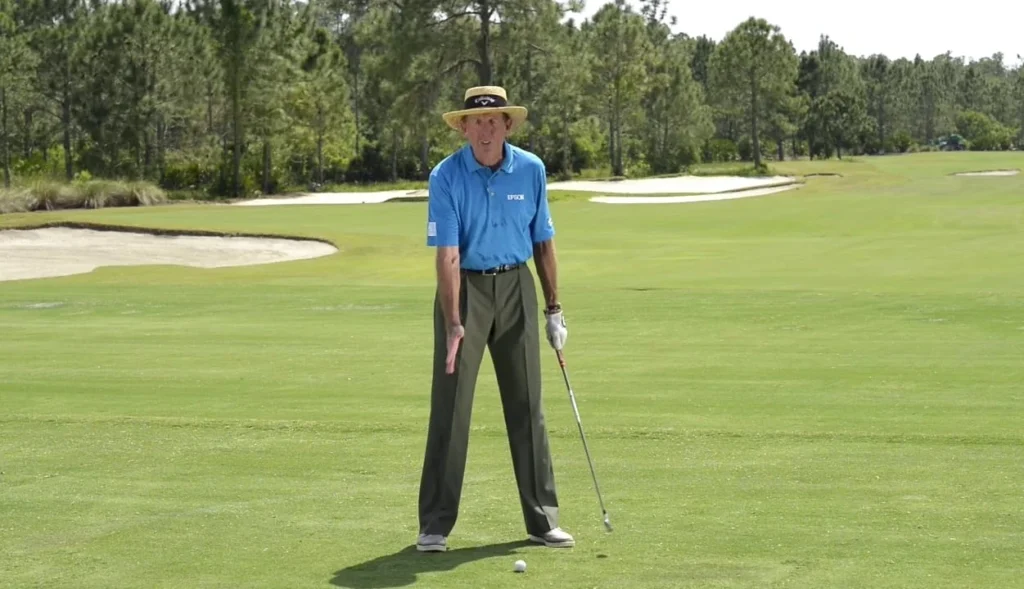
FAQs: Mastering Various Golf Shots
1. How to Hit a Low Golf Shot?
Hitting low golf shots involves careful adjustments to your setup, club selection, and swing dynamics. Position the ball farther back in your stance; select clubs with lower loft; focus on shorter backswings with forward shaft leans; practice this technique to increase control over the trajectory of shots effectively.
2. How to Hit a Low-Cut Golf Shot?
Executing a low-cut golf shot requires making modifications to your grip, setup, and swing path. Open your stance slightly left of center while strengthening your grip for added leverage when performing this type of shot. Combine all these modifications with an aggressive swing that produces left-to-right ball flight for optimal success with this shot type.
3. How to Hit a Low Driver?
Hitting low drivers is key for increasing distance and controlling ball flight. To find your sweet spot, reduce tee height slightly, position the ball slightly back in the stance, and maintain forward shaft lean. Focus on controlled yet powerful swing for best results.
4. How to Hit a Low-Flight Golf Shot?
Mastering low-flight golf shots involves altering both your setup and swing dynamics. Select a club with a lower loft, position the ball back in your stance, and focus on shortening the backswing with controlled follow-through to keep ball flight low in windy conditions. Such adjustments should help maintain a lowball flight trajectory.
5. How to Hit a Low Golf Shot Under Trees?
Navigating shots under trees requires precision and control. Select a lower lofted club with tight gripping, grip down on its handle, and focus on making a compact swing, positioning the ball slightly back in your stance with hands in front of the club head and maintaining a narrow stance are key elements to successfully playing low shots under trees.
6. How to Hit a Low Punch Shot in Golf?
Low-punch shots can be invaluable in difficult circumstances. Use an extended club to reduce loft, narrow your stance, and position the ball back within it. Then speed through impact with a short backswing and controlled follow-through for maximum effectiveness and an impressive low, penetrating punch shot!
7. How to Hit a Low-Rising Golf Shot?
Create low-rising golf shots by altering both club selection and swing dynamics. Choose a club with slightly more loft, tee the ball higher, and aim for an uninterrupted upswing; these adjustments will enable you to launch higher while keeping a controlled trajectory.
8. How to Hit a Low Trajectory Golf Shot?
Success with low-trajectory golf shots requires both setup adjustments and swing control. Position the ball back in your stance, select a lower lofted club, and execute short backswings with forward shaft leans; these modifications should help consistently produce lower ball flights.
9. How to Stay Down on a Golf Shot?
Maintaining control and consistency when shooting golf requires staying down on each shot. A balanced setup, bent hips, and no early extension during swing are key to maintaining control. Keep your head steady as well as practice maintaining a stable posture throughout your swing for increased ball striking ability.
10. How Do You Hit a Golf Ball High or Low?
To achieve high shots with golf clubs with greater loft, tee the ball higher, and focus on an effortless upward swing, use clubs with less loft and place the tee lower. This will result in controlled downward trajectories for shots taken with this approach. Adjustments made to tee height, club selection, and swing dynamics all play into this process of hitting golf balls at differing distances.
11. How Do You Hit Down in Golf?
Hitting down in golf involves developing an aggressive downward angle of attack to achieve solid contact with the ball. Position the ball slightly forward in your stance, follow a steeper swing path, and aim to strike downward at impact for optimal ball-turf contact and consistent ball-striking results. These adjustments promote crisp ball-turf contact while increasing overall consistency among your strokes.
12. Is It Better to Hit a Golf Ball High or Low?
Golfers often select high or low shots depending on the situation and course conditions, as a particular shot will benefit either carrying obstacles over quickly on the green or stopping quickly when soft conditions are present. Conversely, low shots work better in windy environments to maximize distance while passing under obstacles more effectively. Therefore, golfers must learn both trajectories to adapt to all playing conditions.

